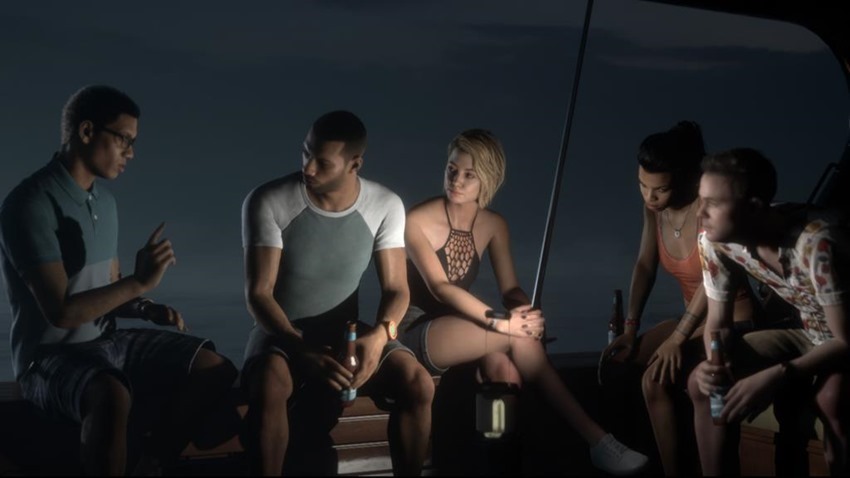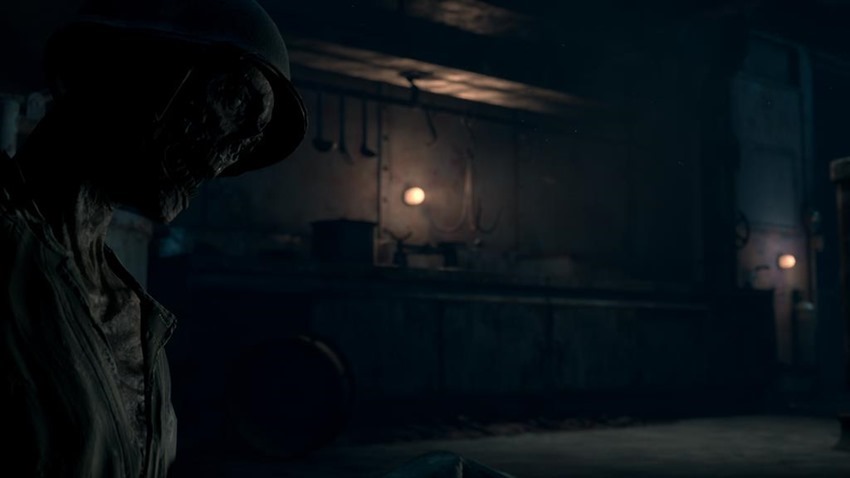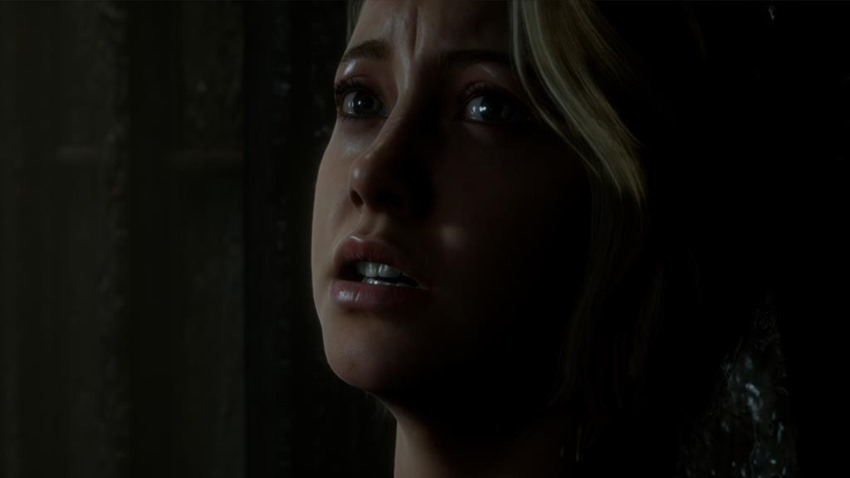No one really saw how well Supermassive’s Until Dawn would eventually do. Perhaps not even Supermassive themselves. The deliciously campy teen horror evoked tropes from old-school slasher films, with charming but awkward dialogue, gruesomely violent deaths and a near non-sensical plot all tying it together. Underneath all of that was a complex web of decisions that tied together all of your actions. Every choice you made in conversation, every quick-time event you missed, and every path you took was recorded to determine a multitude of outcomes, with anywhere from everyone surviving to everyone dying. Ambitious and engrossing, neither of which can be applied to Supermassive’s first follow-up in Man of Medan.

Completely separate to Until Dawn and the first chapter in what is being called The Dark Pictures Anthology, Man of Medan is a smaller effort in the same vein as Supermassive’s previous outing. The same components are present. Swapping between each of the five main characters, you’ll make choices that impact every facet of the story going forward. How you choose to respond in conversation or which tools you take on with you to the next scene are all recorded and adapted for, changing the story and steering it towards an outcome unique to your own tale. The problem with Man of Medan is the stitching is far more visible this time around, made even more apparent by the plodding and uninteresting story.
Man of Medan primarily takes place on an abandoned ship lost during World War II. Your cast of five characters is out at sea exploring undocumented wrecks when misfortune hits and they’re kidnapped, eventually stowing away aboard the creepy ship. From there Man of Medan doesn’t really try to push the envelope beyond your typical horror tropes. The ship, for instance, very clearly has something strange happening on-board, which lead to the sudden deaths of its still decomposing crew. The hunt for lost treasure eventually steers towards a predictable twist, helped by the overbearing prodding of your fourth-wall-breaking narrator that hints at the underlying mystery far too directly. There’s no mystique or surprise left in Man of Medan by the time you reach its end, sapping away any reason to play through again and see alternative threads.

The plot isn’t helped by some incredibly stilted and awkward dialogue, which seems far less believable now that Medan’s cast is supposed to be filled with more responsible looking adults. Reactions to events transpiring aboard the Medan, in particular, are met with flat and boring sounding reactions, never selling the precarious events meant to spook you out convincingly. The stitching together of your dialogue choices can also come across as unrealistic at times, with strange shifts in tone and wildly swings in emotion removing you from the drama on-screen. This extends to some camera cuts, which can show characters in one position and then curiously in entirely different ones a moment later. The skeleton of the choice structure is evident here and takes away some of the mystery of the cogs turning in the background, which just makes the effect far less impressive.
Perhaps the biggest offenders are the cast themselves. There’s nothing likeable about any of the five characters you’ll steer along in Medan’s story, with not a single one providing a convincing reason as to why you should care about their fate. Worst of the lot is the pairing of the rich and careless Julia and her showman boyfriend Alex, who remain entitled and abrasive no matter what dialogue choices you make. Shawn Ashmore’s portrayal of Julia’s brother Conrad is occasionally fun with some quirky comebacks in the game’s protracted prologue, but doesn’t transition well to the more serious events of the latter half. It’s hard to feel bad for a character’s death without a strong emotional attachment to them, but at the very least it makes the accidental miss of a QTE sting a little less each time.

It’s frustrating too that so many of the gruesome deaths you’ll be party to can be triggered by singular misses of specific button prompts, disregarding all the decisions you’ve made up to that point. It was relatively easy for me to keep everyone alive during my first playthrough until the very end only to lose the majority of them to single QTE misses. The urgency of hitting a button in time does help keep you engaged at every point during Medan’s runtime, but it undercuts the choices that are meant to feel weighty when no matter how well you steer a conversation away from altercations, your death is just a moment away should you get briefly distracted
Getting suck into Man of Medan’s world is hampered by this, but it’s helped wonderfully by the exceptional visuals that bring this horror to life. The abandoned ship you spend most of your time exploring is suitably dark and dreary, with soft glows from flickering lights illuminating haunting hallways with exceptional detail. The water-slicked corridors reflect light convincingly around, giving you some reprieve from the dark when your flashlight just isn’t enough to give you a sense of comfort. Detail on character models is a bit hit and miss, as are some of their animations, but it’s easy to overlook when you’re being swept away by Medan’s otherwise technically impressive feats elsewhere.

I only had the chance to play Man of Medan alone, but this first entry into this series also brings with it two ways to play with friends. The first is local, and is meant to simulate the engaging group screenings of classic horrors with a bunch of friends. Supporting up to five people, you can take turns passing around the controller when the game shifts perspective between its cast, letting you struggle to keep your character alive as long as possible.
If local play isn’t an option, Man of Medan also offers a far more interesting online option. Here the story plays out in one continuous stream, but you’ll only see portions of it. When characters are separated, both the control and view of the events that transpire there will only be available to the player controlling them, with some scenes offering additional content to the ones in solo play. It’s an interesting way to have the story play out and have you and a partner try to fill in each other’s gaps, but it’s strongly recommended you don’t play with a complete stranger to capture its full effect.
Both options give Man of Medan a strong community play feature than that of Until Dawn, and its shorter length definitely lends itself to a fun evening with friends playing through its spooky setting and story. But it’s a pity that its actual meat on the bones isn’t anywhere near as compelling as Supermassive’s first attempt with Until Dawn. With more instalments to come in the Dark Pictures universe, there’s definitely space for improvement. And if the entire package is aiming to build on the surprising success of Until Dawn, it needs to make some adjustments.
Last Updated: September 12, 2019





















I_am_Duffman!
September 12, 2019 at 14:45
I enjoyed the single player. The co-op was so much better. If I had more friends, I would love to play it again with a 5 stack.
I am legit looking forward to the next story in the series, especially since it has that actor with a punchable face in it. I can make him die!